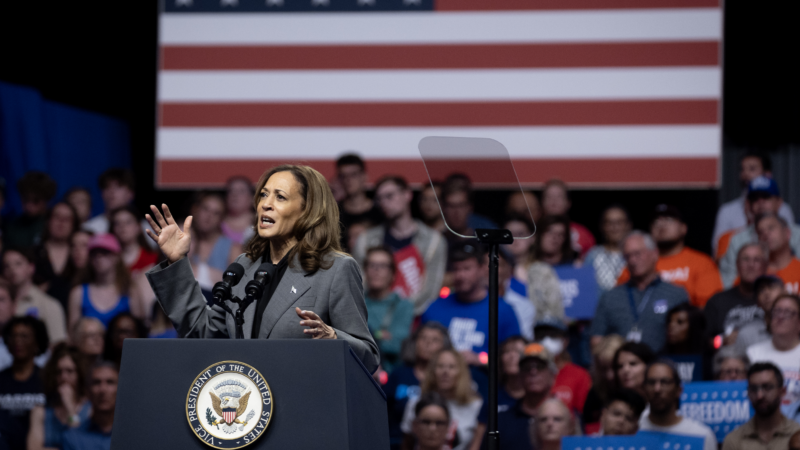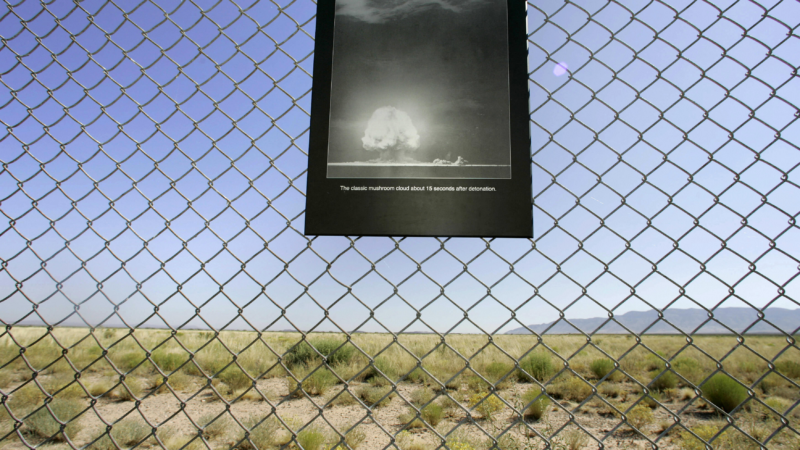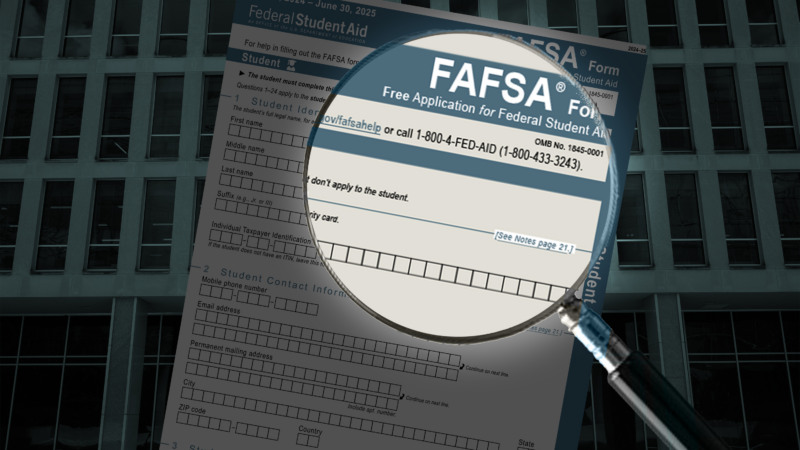Voters in a number of states could upend how their elections are run
Voters in a record number of states — including the battlegrounds of Arizona and Nevada — are set to decide this fall whether to enact far-reaching changes to how their elections are run.
Most of the proposals would replace party primaries with nonpartisan contests, where all candidates, regardless of party, appear on the same ballot and some number of candidates, like the “top four” vote-getters, move on to the general election.
Nick Troiano — founding executive director of Unite America, a philanthropic venture fund that invests in nonpartisan electoral reform — called this year “an inflection point for the primary reform movement.”
“Never before have we seen this many initiatives on the ballot in one year to reimagine how we elect our leaders,” he said, “especially in abolishing party primaries.”
Several of the ballot measures would pair nonpartisan primaries with ranked choice voting for general elections. (Alaska, on the other hand, will vote on getting rid of its ranked choice system.)
Proponents of primary reform say partisan elections often exclude unaffiliated voters and bolster more extreme candidates who mainly appeal to a party’s base, likely exacerbating polarization.
Currently, five states have some nonpartisan primaries, and Troiano said their elections see higher participation among voters, as well as fewer uncontested races and better representation in government.
“And we see elected leaders who are more inclined to work across the aisle because they don’t fear that they will get primaried out of office in their next election,” he said.
Opponents of these measures argue nonpartisan primaries strip power away from parties to control who can vote in their elections. They also say big changes in how elections work, including ranked choice voting, can confuse voters.
Another critique is that the promise of reform under a nonpartisan system has been overstated, as some research on whether these systems have led to the election of more moderate candidates has found mixed results.
Here is a rundown on what is set to be voted on in each state:
Alaska — overturn ranked choice voting
Alaska already has a nonpartisan, top-four primary system, as well as ranked choice voting for general elections, after voters there approved a ballot measure in 2020.
This system was first used in the 2022 election, when Democrat Mary Peltola won a ranked choice contest for the lone U.S. House seat in the conservative-leaning state.
With ranked choice voting, if a candidate gets a majority of first-choice votes, they win the election outright. But if no one gets a majority, the candidate receiving the fewest votes is eliminated, and voters who ranked that candidate first would have their votes transferred to their second choice. This is repeated until one candidate gets majority support.
Opponents of the system are now hoping Alaska voters reverse course and get rid of ranked choice voting, with a measure on this year’s ballot.
(Across the country, many Republican-led states have in recent months preemptively banned ranked choice voting, and during the general election Missouri voters will decide on a constitutional amendment to block it.)
Arizona — nonpartisan primaries
If approved by voters, Proposition 140 would eliminate partisan primaries and allow all Arizona voters to vote for any candidate running in a primary election, regardless of party affiliation.
The measure would leave it up to state lawmakers to sort out how many candidates move to the general election, and then how it would be decided who wins. According to the proposal, “if future law provides that three or more candidates may advance to the general election for an office to which one candidate will be elected, voter rankings shall be used.”
One complication in Arizona: Voters are also set to vote on a competing measure, Proposition 133, that would maintain party primaries.
Currently, Arizona voters who are registered with a party can only vote in that party’s primary elections. However, unaffiliated voters can choose which party’s primary they want to participate in.
Prop 140 also drops signature requirements for ballot qualification, which is generally an expensive logistical hurdle for independent and minor party candidates. Lastly, the measure would prohibit the use of public funds for “political party elections.”

Colorado — nonpartisan primaries / ranked choice voting
If approved by voters, Initiative 310 would implement a top-four primary system in Colorado, as well as ranked choice voting in general elections. This is similar to the system Alaska already has in place.
In Colorado’s current primary system — like Arizona’s — if you are registered with a political party in the state, you can only vote in that party’s primary election. Voters who are unaffiliated can vote in any one party’s primary.
If approved by voters, Initiative 310 is written to take effect in 2026, but state lawmakers passed a law this year that could potentially block implementation of the measure. According to Colorado Public Radio, though, “Gov. Jared Polis said that if the measure passes, he’ll work to ensure that it is implemented by 2028.”
District of Columbia — semi-open primaries / ranked choice voting
Washington, D.C.’s Ballot Initiative 83, if enacted, would change elections in two ways:
- allow unaffiliated voters to vote in a party primary;
- implement ranked choice voting, allowing voters to rank five candidates in order of preference for most offices on the ballot.
Currently, the District of Columbia has closed primaries, which means you have to be registered with a political party in order to participate in its primary elections.
Idaho — nonpartisan primaries / ranked choice voting
If passed, Idaho’s ballot measure would create a top-four primary system, as well ranked choice voting for the state’s general elections.
Since 2023, Idaho has had a ban on ranked choice voting on the books, so this measure would seek to overturn that law.
Right now, political parties in the state are allowed to restrict who can participate in their primary elections by including or excluding voters who are not registered with the party.

Montana — nonpartisan primaries / majoritarian general elections
Montana has two paired ballot issues — one that would create a top-four primary system, and another that would ensure that majority vote decides an election winner. That could be, for instance, ranked choice voting or a runoff.
Montana currently has open, but partisan, primary elections. This means voters can choose whatever party primary they want to vote in, but they can only vote for candidates in that one party.
Nevada — nonpartisan primaries / ranked choice voting
If approved by voters, Ballot Question No. 3 would create a top-five primary system and ranked choice voting for general elections in Nevada.
The measure would amend the state constitution, and in Nevada, proposed amendments have to be approved in two general elections in order to be enacted. This measure already passed once, during the 2022 general election.
Nevada currently has closed primary elections. This means that only voters who are registered with a party can participate in that party’s elections. Unaffiliated voters can’t participate in party primaries.
Oregon — ranked choice voting
Measure 117 in Oregon, if passed, would create a ranked choice voting system for both primary and general elections, beginning in 2028.
Oregon’s proposal would apply to presidential, congressional and gubernatorial elections — as well as other statewide races, including for secretary of state, state treasurer and attorney general. The measure also would allow ranked choice voting to be used for some local elected offices.
South Dakota — nonpartisan primaries
South Dakota’s ballot measure, if approved, would set up a nonpartisan top-two primary system, in which the two candidates who receive the most votes from all primary voters advance to the general election.
Currently, South Dakota allows political parties to decide who can participate in their primaries. During most recent elections in the state, the Democratic Party allowed Democratic voters — as well as independents and unaffiliated voters. South Dakota’s Republican Party, however, has kept its primaries closed and only allows voters who are registered Republican to participate.
Other election measures
There are more election-related measures on state ballots as well, including:
- Connecticut deciding whether to allow no-excuse absentee voting;
- a proposal in Ohio to create a citizen redistricting commission;
- and eight states, including North Carolina and Wisconsin, weighing measures that would explicitly prohibit noncitizen voting.
Mueller investigator says Russia interfered in 2016 — and in the 2024 election too
Mueller deputy Aaron Zebley looks back on the investigation of Trump's ties to Russia and explains why his team didn’t indict the president in 2017. Zebley is the co-author of Interference.
Harris says she would support ending the filibuster to bring back Roe v. Wade
Harris said that as president she would support eliminating the filibuster in the U.S. Senate to bring back federal protections for a woman's right to an abortion.
Push for compensation for U.S. nuclear testing fallout resumes on Capitol Hill
Dozens of advocates are blanketing Capitol Hill this week to continue their push for Congress to revive a program that provided compensation for people suffering long-standing impacts from US nuclear testing programs.
Watchdog sheds light on FAFSA fiasco, from a birthday bug to call center failures
A new review and testimony from investigators with the U.S. Government Accountability Office offer the clearest picture yet of the aid form’s troubled rollout.
A boy snatched from a California park in 1951 is found living on the East Coast
Luis Armando Albino was lured away from a California park at the age of 6. He reunited with his biological family this summer after his niece found him through DNA testing and newspaper clippings.
‘Intermezzo’ is Sally Rooney’s most moving novel yet
Rooney's fourth novel is a story about learning to accept loss. And though it has its share of grief and strife, it's happier and less disturbing than Normal People and Beautiful World, Where Are You.





